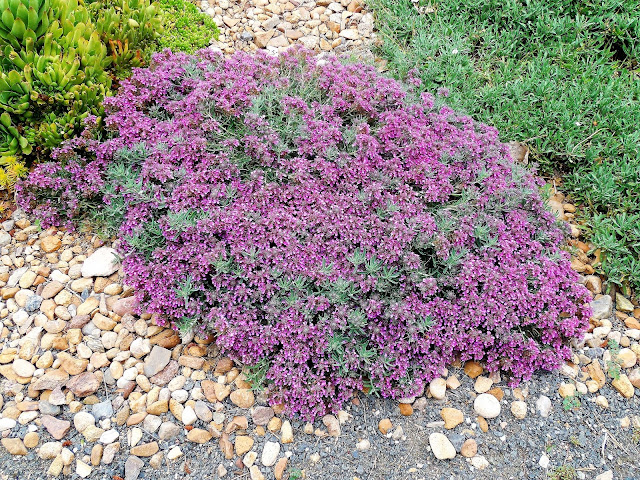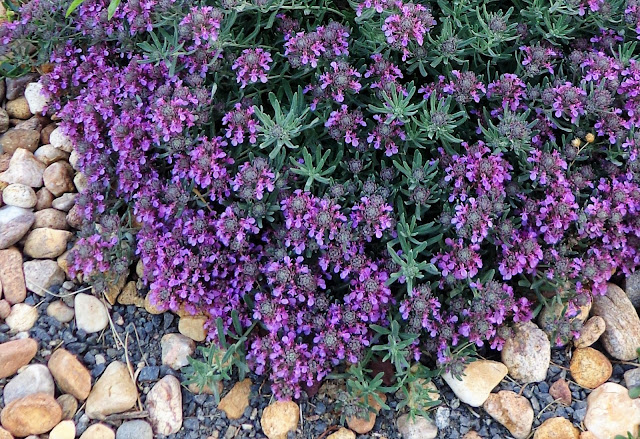Here growing in Lakewood is a fine combination of Zinnia grandiflora (upper yellow plant) and a brilliant purple germander which is one of the two culprits in this tale. The Zinnia is found over much of the Great Plains south of Colorado Springs, well into the Southwest and Mexico. The Teucrium, however, grows only on the Balearic Islands off the Southeast coast of Iberia. It is quite similar to many germanders in the T. polium persuasion. I am surprised it hasn't been more frequently lumped in with them. The correct name for this is Teucrium cossonii, and it is often sold under this name in California. Somewhere along the way (probably in Denver where this and its evil non-twin are often grown) someone probably switched labels, and this began to be sold as T. aroanium, which as you shall see is something entirely different!
So if you Google "Teucrium aroanium" you will often find this plant labeled so. Just say "NO!"...Here growing at the sublime crevice garden complex created by Kenton Seth and co. in Arvada, Co.
 |
| Please repeat: "cossonii, not aroanium, cossonii, not aroanium" perhaps to the tune of "Istanbul not Constantinople" |
Note the narrow linear leaves and the capitate flower heads of small flowers with slightly flared segments and bright purple blue color.
 |
| This makes it look too pink. It's generally bluer. |
I photographed the only two herbarium specimens of this taxon at the Herbarium of the University of Copenhagen: I don't think it's a terribly common plant even on the Balearics...
I was researching the teucriums in 2016 precisely to help disentangle this confusion. To my chagrin, there were NO specimens of Teucrium aroanium at Copenhagen, despite the fact they possess the best Greek collections outside Greece (and possibly inside Greece as well, alas). That's how rare the next taxon is.
 |
| Teucrium aroanium |
A little closer look...(above) and if you can't take MY word for this being the TRUE T. aroanium, I recommend checking out the book below...and page 284 is an in depth essay on the Greek species, only known from the Peloponnese, and thus far only found around the River Styx (I kid you not) and once a century ago on Mt. Taygetos--a rare plant indeed!

Just as with its Spanish cousin, T. aroanium can make wonderful silvery mats--here seen at the exquisite Gardens on Spring Creek in Fort Collins.
Both plants are rare in nature, and deserve to be common in our gardens. But I hope we can keep them straight henceforward!











%20-%20Copy.JPG)
Thank you for that. Jake Wolf
ReplyDeleteWell, now I see that I have T. cossonii that was mislabeled as T. aroanium. Nice to have the correct name. Funny how these little mistakes "propagate" through the plant world.
ReplyDelete